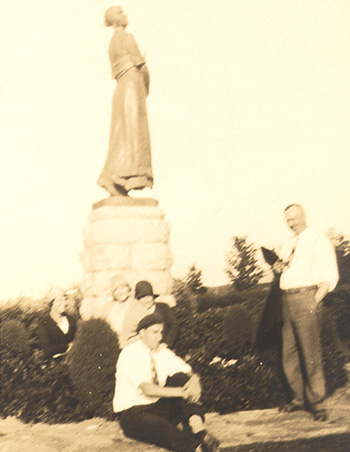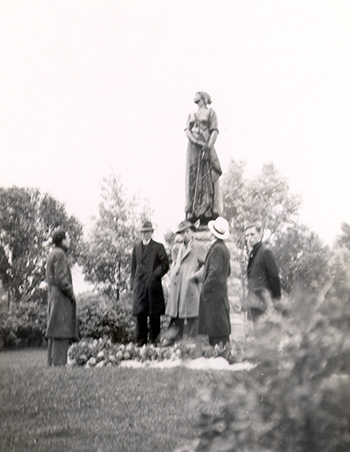
Evangeline
Grand-Pré National Historic Site
Evangeline: A Tale of Acadie
“Evangeline: A Tale of Acadie,” first published in 1847, was a poem written by Henry Wadsworth Longfellow. Almost immediately after its release, the poem obtained worldwide popularity. Millions of people were drawn to the story of a young Acadian couple from the village of Grand-Pré, Evangeline Bellefontaine and Gabriel Lajeunesse, who were separated by the events of the Deportation.

Evangeline, being a faithful, pious woman, vowed to find her true love Gabriel, yet she always seemed to be two steps behind. More than a fictitious character, Evangeline became a symbol of the Deportation and the perseverance of the Acadian people.
Evangeline in America
The poem became a part of the school curriculum for generations of Americans. They fell in love with the young and beautiful sympathetic Evangeline. They were drawn to Evangeline’s pure, uncontrived, innocent beauty, and to the images of natural, green, simple Acadie that Longfellow created. This “earthly paradise” (referring to the name “Acadia” and its connection to the Greek legend of “Arcadia”) attracted tourists to the famous “Land of Evangeline.”
Evangeline and tourism in Nova Scotia
The combination of an alluring romantic tale of love and loss and a heavenly landscape inspired a new class of “tourists” to travel to Nova Scotia. In 1871, steam ship and rail service from New England to Nova Scotia had begun to bring tourists to the “Land of Evangeline.” The new rail service from Halifax to Annapolis Royal, completed in 1869, (amalgamated under Dominion Atlantic Railway in 1895) opened with six locomotive engines: two of which were called Evangeline and Gabriel.

The Dominion Atlantic Railway (DAR) used the association of Grand-Pré with Longfellow’s Evangeline to promote railway travel. Visitors travelling on the Evangeline locomotive would stop at the Grand-Pré station just a few metres away from the entrance to the Park. The highlight of the visit was being greeted by the statue of Evangeline in the 14 acres of carefully manicured Victorian gardens that were created to represent Evangeline’s village of Grand-Pré.
Many businesses also appropriated the image of Evangeline to sell products such as soda, chocolates, campgrounds, funeral homes, car dealerships, etc. One of the many Acadian newspapers of the time, founded in Digby in 1887 was named “L’Évangéline.” It was later moved to Moncton and continued publication until 1982.
Evangeline: The statue
On July 29, 1920, the Dominion Atlantic Railway (DAR) added to the evolving cultural landscape of the newly formed Grand-Pré Park when it unveiled a bronze sculpture of Evangeline. The work was produced by a Québécois sculptor named Henri Hébert, who created a variation on an earlier design of his father, sculptor Louis-Philippe Hébert. The sculpture of Evangeline seems to perpetually grieve for her lost homeland of Acadie.
For the past century, Evangeline has been striking a pose.
Evangeline and the Acadian Renaissance
In the late 19th century, the poem and its popularity changed completely how the Acadian story was understood by many across North America, and gave Acadians new pride in their history. It greatly increased the awareness of the Deportation and caused many to question the versions of the story they had been told.

These sentiments brought more support to the Acadian “Renaissance” in politics and culture. In 1881, the first National Acadian Convention was held in Memramcook, New Brunswick. During the convention Acadians chose “Notre Dame de L’Assomption” as their patron saint, as well as August 15th as the Acadian National holiday. Three years later, at the second National Acadian Convention held at Miscouche, Prince Edward Island, “Ave Maris Stella” was chosen as the national Acadian anthem. Also at the Miscouche Convention, the Acadian National flag was adopted.
Through all the changes, the character of Evangeline remains an emotionally powerful icon of the Deportation, symbolically connecting Longfellow’s legacy to the Acadian people and Grand-Pré National Historic Site of Canada.
- Date modified :